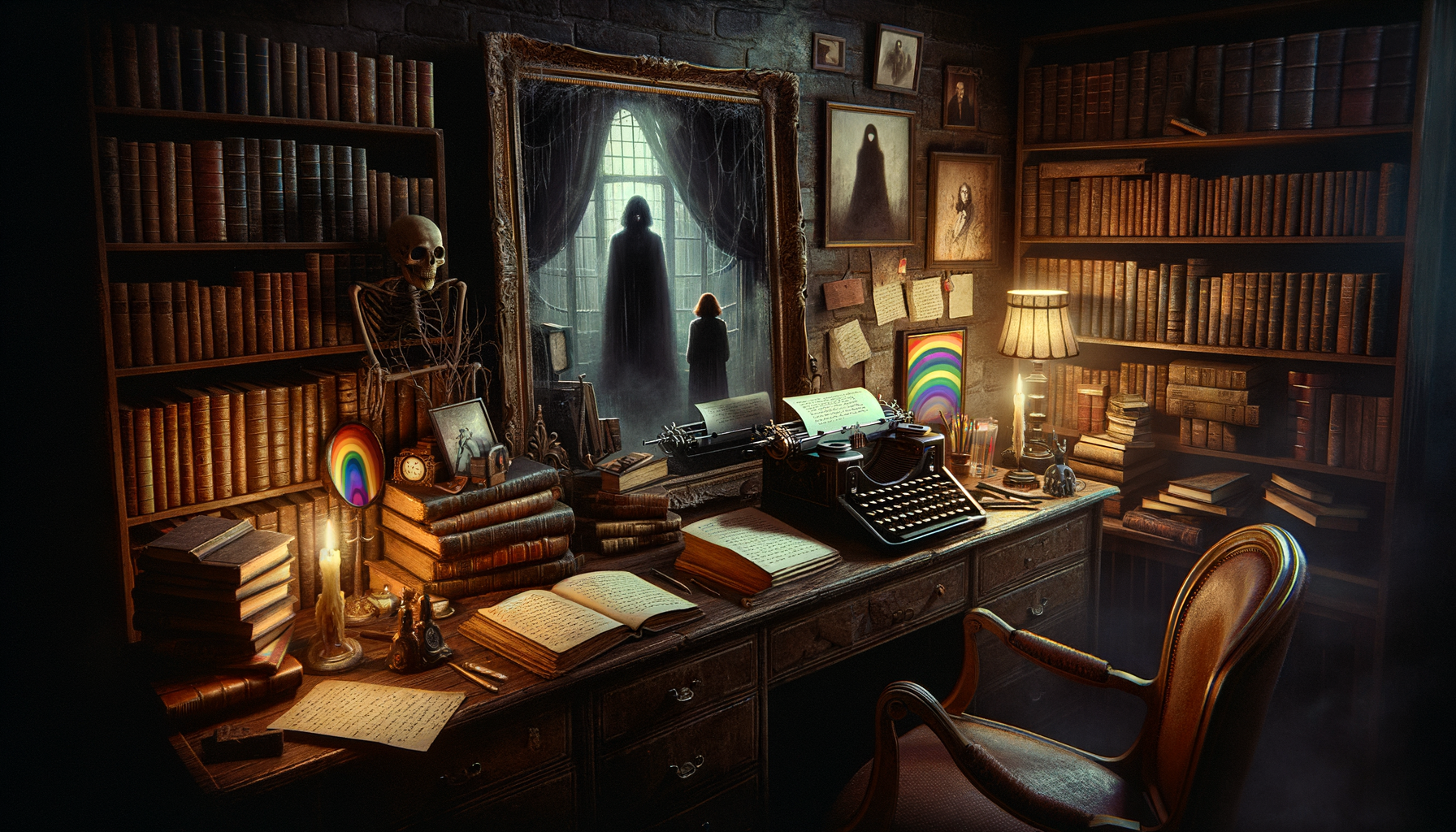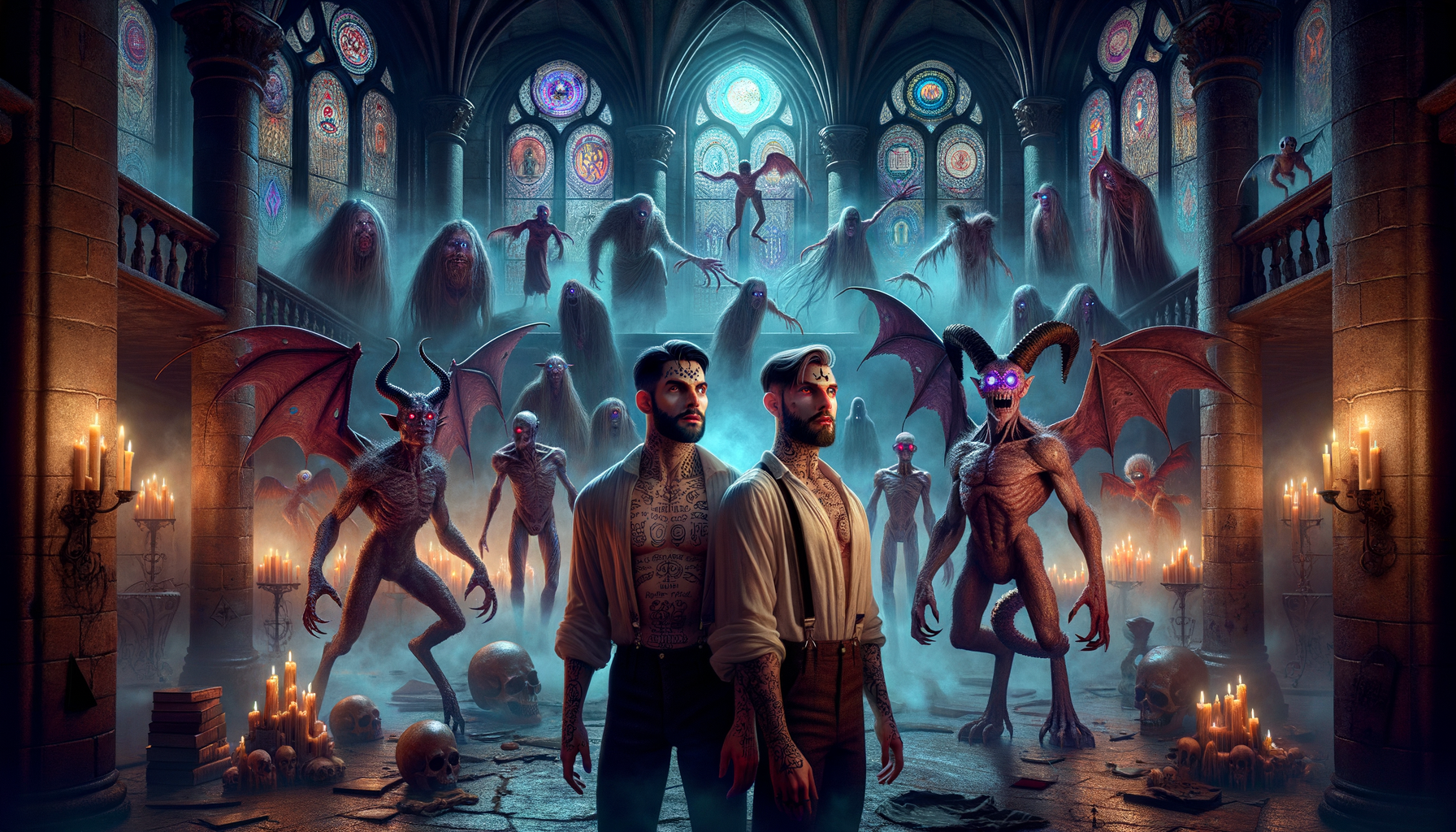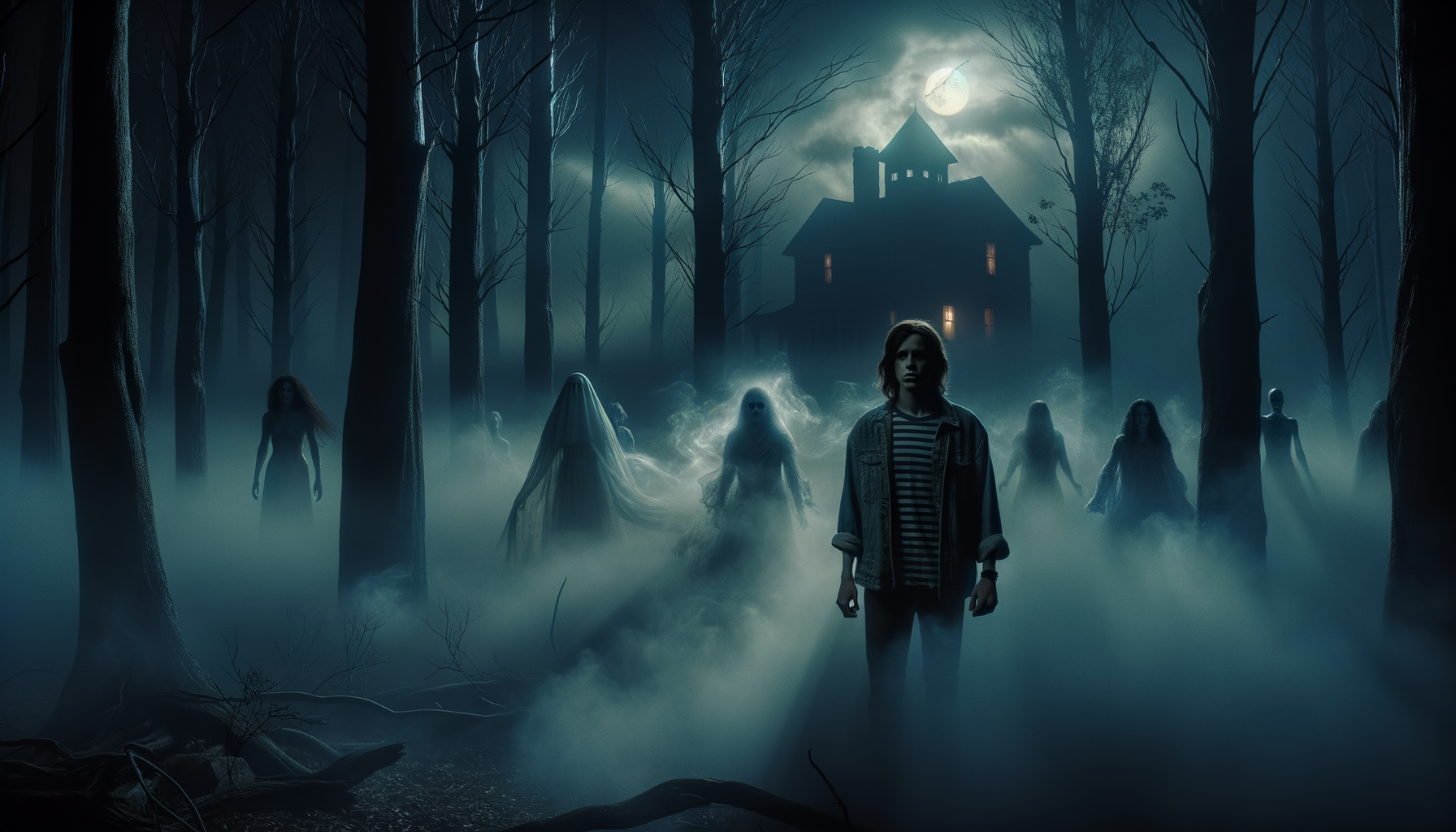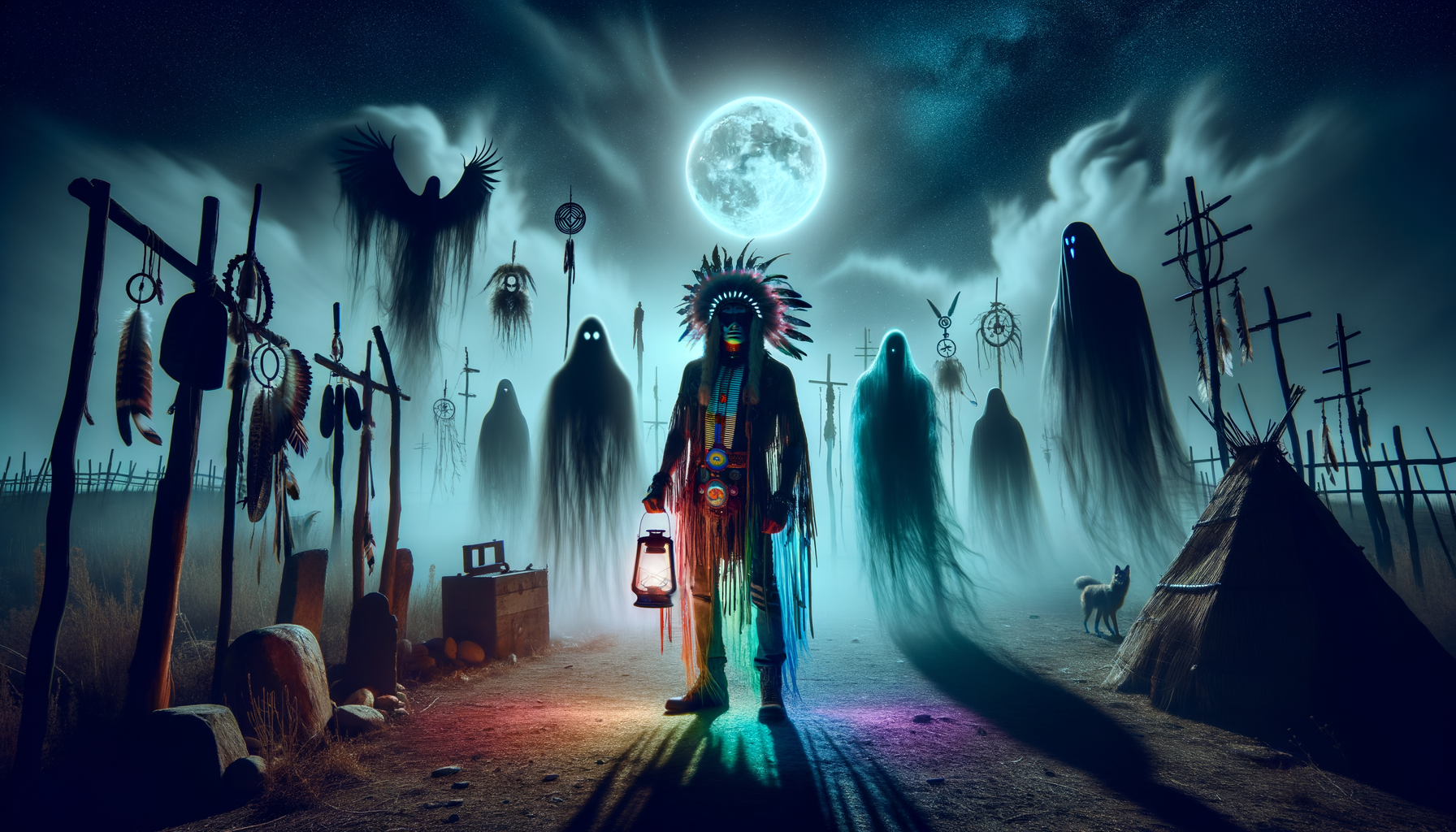Ever wondered how LGBT themes intersect with horror? Patricia Highsmith, the literary mind who gave us the chilling Ripley series, brought nuanced LGBT influences to the genre like never before. In today’s article, we’ll unveil the hidden layers of horror underlined by Highsmith’s unique perspective. From her captivating character arcs to her unsettling narratives, Highsmith didn’t just write horror; she redefined it! Buckle up, as we journey through her compelling contributions that continue to echo in horror literature.
Patricia Highsmith’s Background and LGBT Identity
Brief Biography of Patricia Highsmith
Patricia Highsmith, an American novelist born in 1921, is renowned for her contributions to the psychological thriller and horror genres. With a career spanning several decades, Highsmith penned numerous novels that left an indelible mark on literature. She spent much of her early life in Texas before moving to New York, where her literary journey began in earnest.
Overview of Her Early Life and Literary Journey
Highsmith’s early life was marked by a tumultuous family environment, which perhaps influenced her later works. After graduating from Barnard College, she worked as a comic book writer before publishing her first novel, “Strangers on a Train,” in 1950. This novel’s success paved the way for a prolific career, including the creation of her most famous character, Tom Ripley.
The Significance of Her LGBT Identity in Her Works
Highsmith’s identity as a lesbian played a crucial role in her storytelling. Living during a time when homosexuality was heavily stigmatized, she often embedded themes of alienation and identity struggles within her narratives. Her works frequently reflected the inner turmoil and societal pressures faced by LGBT individuals.
Highsmith’s Personal Challenges and Societal Context
The societal context of Highsmith’s era posed numerous challenges for her. The mid-20th century was a period of significant discrimination against the LGBT community. Highsmith herself faced personal struggles, including the need to hide her sexuality from the public eye, which undoubtedly influenced her writing style and thematic choices.
LGBT Issues During Highsmith’s Lifetime
During Highsmith’s lifetime, LGBT individuals faced considerable societal hurdles, including legal discrimination and social ostracism. These issues were mirrored in her works, which often portrayed characters grappling with their identities in a world that rejected them.
How Societal Pressures Shaped Her Writing
The societal pressures of her time led Highsmith to explore themes of secrecy, duality, and identity conflict. Her characters often lived double lives, reflecting her own need to conceal her true self. This duality added layers of psychological tension to her horror narratives.
Impact of Personal Experiences on Her Horror Narratives
Highsmith’s personal experiences directly impacted her horror stories. Her feelings of isolation and fear of exposure infused her writing with a sense of dread and suspense. This personal touch gave her horror novels a unique psychological depth.
Exploration of Alienation and Identity in Her Horror Novels
Highsmith’s horror novels frequently explored themes of alienation and identity. Characters like Tom Ripley embodied the struggle to reconcile one’s inner self with external expectations, creating a sense of unease that resonated deeply with readers.
LGBT Themes in Patricia Highsmith’s Major Works
Analysis of “The Talented Mr. Ripley”
“The Talented Mr. Ripley” is one of Highsmith’s most notable works, featuring Tom Ripley, a character whose ambiguous sexuality adds to the novel’s intrigue. Ripley’s obsession with identity and his ability to manipulate those around him highlight underlying themes of desire and deception.
Tom Ripley’s Ambiguous Sexuality
Ripley’s sexuality is never explicitly defined, but his relationships and actions suggest a complex and fluid identity. This ambiguity adds a layer of tension and depth to the narrative, allowing readers to interpret his motivations in various ways.
Underlying Themes of Identity and Obsession
The novel delves into themes of identity and obsession, with Ripley’s desire to assume another’s life reflecting his own internal conflicts. Highsmith uses these themes to explore the darker aspects of human nature.
Examination of “Strangers on a Train”
“Strangers on a Train” presents a queer subtext between its main characters, Bruno and Guy. The psychological tension and duality in their relationship drive the narrative, creating an atmosphere of suspense and moral ambiguity.
Queer Subtext Between the Main Characters
The interactions between Bruno and Guy suggest an underlying attraction and obsession, adding a layer of complexity to their relationship. This subtext enhances the psychological tension and drives the plot forward.
Psychological Depth and Tension Rooted in Duality
Highsmith masterfully uses the duality between Bruno and Guy to create a sense of unease. Their intertwined fates and conflicting desires mirror broader themes of identity and moral ambiguity.
“The Price of Salt” and Its Deviations
“The Price of Salt” stands out as a deviation from Highsmith’s usual horror themes, focusing instead on a romantic narrative between two women. However, elements of suspense and societal critique are still present, blending romance with psychological tension.
Intersection of Romantic Narrative and Horror Elements
While primarily a love story, “The Price of Salt” incorporates elements of suspense and fear, reflecting the societal dangers faced by LGBT individuals. This intersection adds depth to the narrative and challenges conventional genre boundaries.
How Highsmith’s Exploration of Same-Sex Love Challenged Norms
By portraying a same-sex relationship with complexity and empathy, Highsmith challenged societal norms and offered a rare positive representation of lesbian love. This was groundbreaking at a time when such narratives were virtually non-existent.
The Cultural Impact of Highsmith’s LGBT Horror Themes
Reception of Highsmith’s Works in the LGBT Community
Highsmith’s works have been both celebrated and critiqued within the LGBT community. Her portrayal of complex, flawed characters resonated with many readers, while others grappled with the darker aspects of her narratives.
Influence on LGBT Readers and Writers
Highsmith’s exploration of LGBT themes influenced a generation of readers and writers. Her willingness to confront societal taboos and depict the complexities of identity paved the way for more diverse voices in literature.
Critique and Praise Within the Literary Community
Highsmith received both critique and praise from the literary community. While some criticized her for the moral ambiguity of her characters, others lauded her for her psychological insight and narrative skill.
Highsmith’s Influence on Contemporary LGBT Horror Writers
Contemporary LGBT horror writers often cite Highsmith as an influence. Her ability to weave psychological tension with themes of identity and alienation set a standard for the genre and inspired many to explore similar themes.
Legacy and Homage in Modern Horror Literature
Highsmith’s legacy endures in modern horror literature, with many authors paying homage to her style and themes. Her exploration of the human psyche and societal critique remains relevant and influential.
Interviews or Quotes from Current Authors Inspired by Highsmith
Many current authors have spoken about Highsmith’s impact on their work. Quotes and interviews reveal a deep respect for her ability to blend psychological horror with profound societal commentary.
Psychological Horror and LGBT Representation
Highsmith’s Mastery of Psychological Tension
Highsmith was a master of psychological tension, using subtle cues and character interactions to create a sense of unease. Her narratives often left readers questioning the nature of reality and identity.
Techniques Used to Create Suspense and Fear
Highsmith employed various techniques to build suspense, including unreliable narrators, intricate plot twists, and the exploration of her characters’ darkest thoughts. These elements combined to create a gripping sense of fear.
How LGBT Themes Enhance the Psychological Dimension of Her Works
The incorporation of LGBT themes added layers of complexity to Highsmith’s psychological horror. The societal pressures and internal conflicts faced by her characters heightened the tension and deepened the narrative impact.
Comparative Analysis with Other Horror Writers
Comparing Highsmith to other horror writers highlights her unique approach. While many horror authors focus on external threats, Highsmith’s work delves into the internal struggles and psychological turmoil of her characters.
Highsmith vs. Other LGBT Horror Authors
Highsmith’s exploration of LGBT themes set her apart from other horror authors. Her nuanced portrayal of identity and alienation provided a fresh perspective in a genre often dominated by heteronormative narratives.
Unique Aspects of Her Storytelling
Highsmith’s storytelling is characterized by its psychological depth, moral ambiguity, and exploration of identity. These unique aspects have solidified her place as a pioneering figure in both horror and LGBT literature.
Societal Reflections in Highsmith’s Horror
Representation of Societal Fears and Norms
Highsmith’s horror novels often reflected societal fears and norms, using her characters’ struggles to critique broader social issues. Her work provides a mirror to the anxieties of her time.
How Highsmith’s Horror Mirrored Societal Anxieties
The societal anxieties of Highsmith’s era, including fear of the unknown and the pressure to conform, are mirrored in her horror narratives. Her characters’ internal conflicts often symbolized larger societal tensions.
LGBT Issues as a Lens for Broader Societal Critique
Highsmith used LGBT issues as a lens to critique broader societal norms. By exploring themes of identity and alienation, she highlighted the flaws and hypocrisies of the society in which she lived.
Evolution of Societal Acceptance Reflected in Her Writing
The evolution of societal acceptance of LGBT individuals is subtly reflected in Highsmith’s writing. Her later works show a gradual shift towards more nuanced and empathetic portrayals of LGBT characters.
Changes from Early to Later Works
Highsmith’s early works often depicted LGBT characters in conflict with society, while her later works show a more complex understanding of identity and acceptance. This shift mirrors the broader changes in societal attitudes over time.
Predictions and Parallels in Today’s Society
Highsmith’s exploration of societal fears and identity issues remains relevant today. Her works offer valuable insights into current societal dynamics and continue to resonate with contemporary readers and writers.
Conclusion
Patricia Highsmith masterfully intertwined horror and LGBT themes, creating works that are as psychologically intense as they are socially significant. Her stories not only terrify but also challenge us to reflect on identity, society, and the human condition. If you haven’t explored her works yet, now’s the perfect time! Dive into Highsmith’s world and uncover the layers of fear and identity that continue to shape the horror genre. Keep the conversation going by sharing your thoughts or reading more about LGBT influences in horror literature. Happy reading, and beware of the shadows – they might be hiding more than just monsters!




